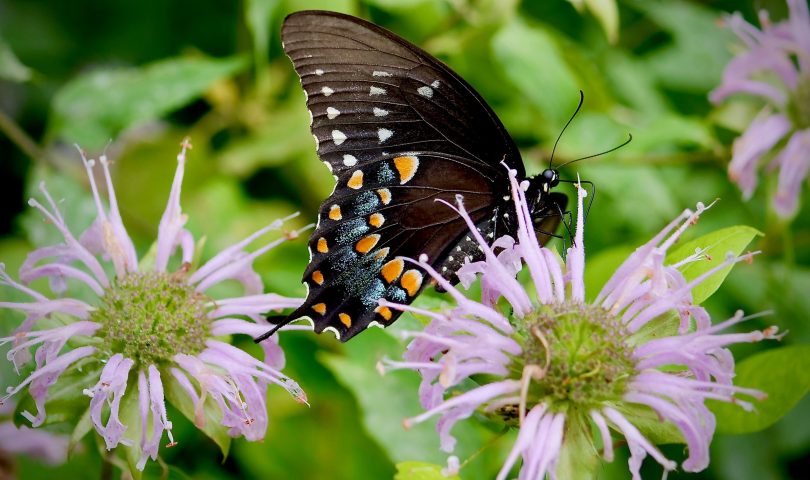BY DAVID P. DAVIS
Now blooming at the West Virginia Botanic Garden includes all manner of select cultivars and wildflowers. I use the term “select cultivars” to denote plants that were selected for their color, size and shape or time of blooming, and most often have been developed by botanists and plant breeders to provide specific traits.
Wildflowers are native and can be found regionally. They may occur naturally at the garden but may also have been planted by WVBG staff and volunteers over the years.
In the select cultivar category, our hibiscus and hydrangea are looking great and complementing each other. The tree hydrangea (Hydrangea paniculata) will continue to bloom and open through the summer, and some large, cone-shaped blooms will stay on plants into the winter.
The hibiscus rose mallow (Hibiscus hybrid) and rose of Sharon (Hibiscus syriacus) are headed to their full bloom stage and many of these flowers are more ephemeral. For instance, the rose mallow pushes out multiple large 6-to 8-inch crape-like blooms, but most only last a day or two before they droop and fall.
Both the hydrangea and hibiscus can be found in the Yagle Garden.
In the wildflower category, cardinal flowers are heading into full bloom, but also are large clumps of Joe Pye weed (Eutrochium fistulosum), both in the Butterfly Garden. These native wildflowers are a treat to see up close, as opposed to seeing them through car windows. At the WVBG, you can walk down the center of the Butterfly Garden with towering Joe Pye on both sides.
In all areas of the WVBG, swallowtails are trying to steal the show from the many blooms. Flying now are Eastern tiger swallowtails (Papilio glaucus), spicebush swallowtails (Papilio troilus), pipevine swallowtails (Battus philenor) and black swallowtails (Papilio polyxenes); all rather hard to distinguish from each other.
Right now, the spicebush swallowtails are very abundant at the WVBG. Their larvae develop on spicebush while the adults take nectar from a variety of blooms but preferring cardinal flowers and wild purple bergamot. The best way I have found to distinguish this swallowtail from the other black-colored swallowtails is to look for two rows of orange spots on the underside of the hind wing with one spot diminished to a colored swoosh of light blue.
Come see how many swallowtail butterflies you can find at your WVBG and become a member today.
FOR INFORMATION, MAPS, AND MORE, go to WVBG.org or visit at 1061 Tyrone Road in Morgantown.




